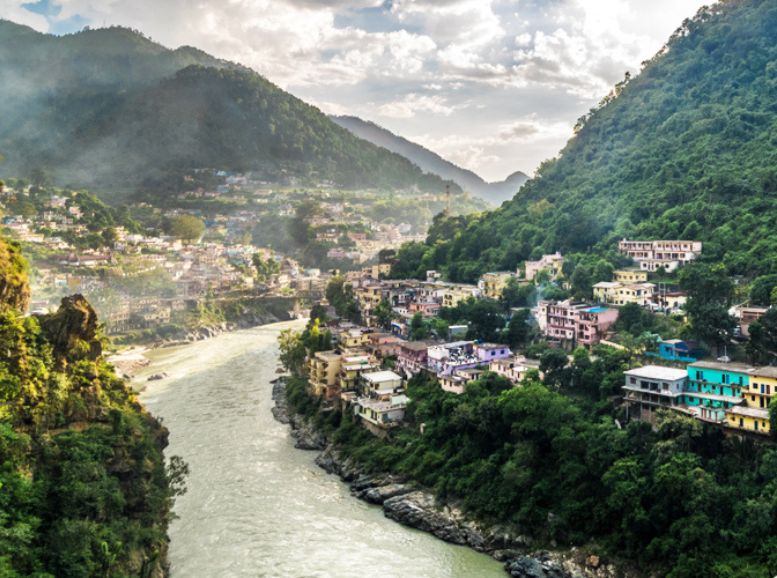Rudraprayag stands as a testament to the breathtaking beauty and spiritual serenity of Uttarakhand, India. As a gateway to the revered Char Dham pilgrimage circuit, this quaint town holds a special place in the hearts of travelers seeking peace in nature’s embrace and solace in sacred sites. In this comprehensive tour guide, we embark on a journey to unravel the wonders of Rudraprayag, offering essential insights, travel tips, and must-see attractions for adventurers and seekers alike. From the tranquil confluence of rivers to the vibrant cultural tapestry woven through its streets, Rudraprayag beckons with promises of exploration and discovery. Join us as we delve into the essence of Rudraprayag, where every corner holds a story, and every vista inspires awe.
How to reach:
By Air:
Rudraprayag is conveniently served by Jolly Grant Airport in Dehradun, roughly a 159-kilometer journey away. Upon arrival at Jolly Grant Airport, several options await you to reach Rudraprayag. Taxis provide a comfortable and direct route, while buses offer a budget-friendly alternative.
By Train:
For those arriving by train, Rishikesh Railway Station serves as the closest connection to Rudraprayag, situated roughly 140 kilometers away. While a taxi will get you there swiftly, consider the scenic bus route – a 5-6 hour journey that unfolds the picturesque beauty of the region as you travel towards the heart of Rudraprayag.
By Road:
For the independent traveler, Rudraprayag is easily accessible by road. Well-maintained routes connect the town to major cities and towns in Uttarakhand and neighboring states. Choose from comfortable state-run buses or opt for the flexibility of private taxis from Rishikesh, Haridwar, Dehradun, or even Delhi. The journey itself becomes an adventure, offering mesmerizing vistas of the Himalayas. However, some sections can be challenging to navigate.
Best time to visit:
Summer (April to June):
Summer, spanning from April to June, transforms Rudraprayag into a haven for outdoor enthusiasts. With comfortable temperatures ranging from [low temperature] to [high temperature], this period is ideal for trekking, sightseeing, and immersing yourself in the region’s natural beauty. Whether you’re seeking invigorating hikes or leisurely strolls, summer’s pleasant weather caters to all.
Monsoon (July to September):
Monsoon season paints Rudraprayag in a vibrant new light. Lush greenery flourishes, and cascading waterfalls thunder to life, creating a breathtaking spectacle. However, navigating the region during this time requires caution. Heavy rainfall can lead to landslides and slippery roads, so careful planning and awareness are crucial for a safe and enjoyable visit.
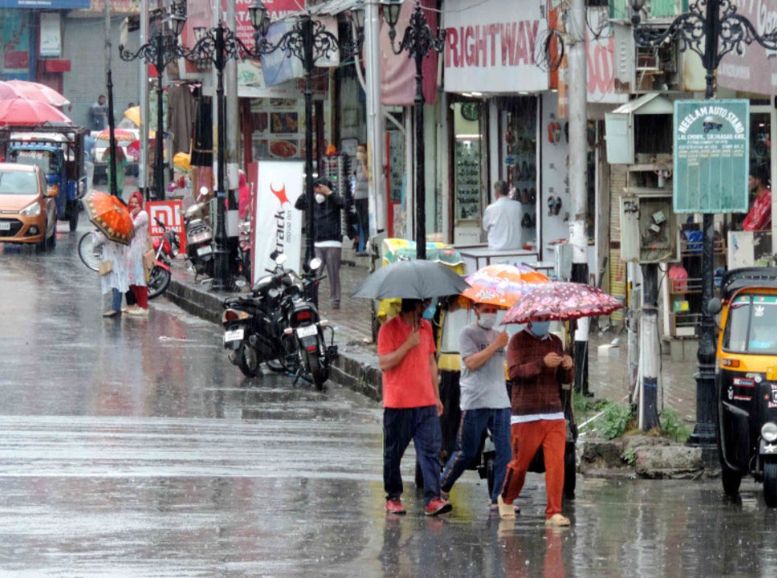
Autumn (October to November):
Autumn, spanning from September to November, transforms Rudraprayag into a paradise for outdoor enthusiasts. Cooler temperatures and crystal-clear skies create perfect conditions for activities like trekking, nature photography, or exploring the historical sites. The surrounding landscapes come alive with vibrant hues as the foliage changes color, creating a feast for the senses. This season also sees a decrease in crowds compared to summer, allowing you to experience the serenity of Rudraprayag at its peak.
Winter (December to February):
Winter in Rudraprayag presents a unique contrast. The town itself experiences a pleasant coolness, while higher reaches like Kedarnath and Badrinath witness snowfall. This season caters to travelers seeking a different perspective of Rudraprayag. However, navigating the region during winter might be challenging due to potential snow closures. Careful planning and checking weather updates become essential for a smooth journey.
Must-see places:
Rudraprayag Sangam:
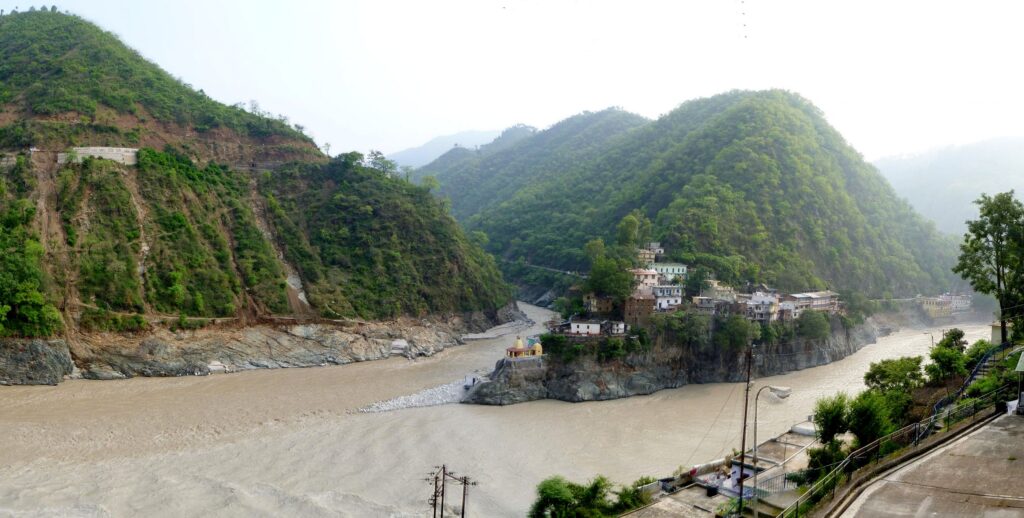
The heart of Rudraprayag is the holy meeting point, called Sangam, where two rivers, Alaknanda and Mandakini, join together. This clean water junction is very important in Hindu beliefs, as it’s said to be the place where Lord Shiva once danced. Many people visit Sangam to see the beautiful sight of the rivers meeting, surrounded by tall mountains. The calm feeling and religious spirit of Rudraprayag Sangam make it a must-see place for anyone looking for peace and a connection to something holy in the beauty of nature.
Koteshwar Temple:
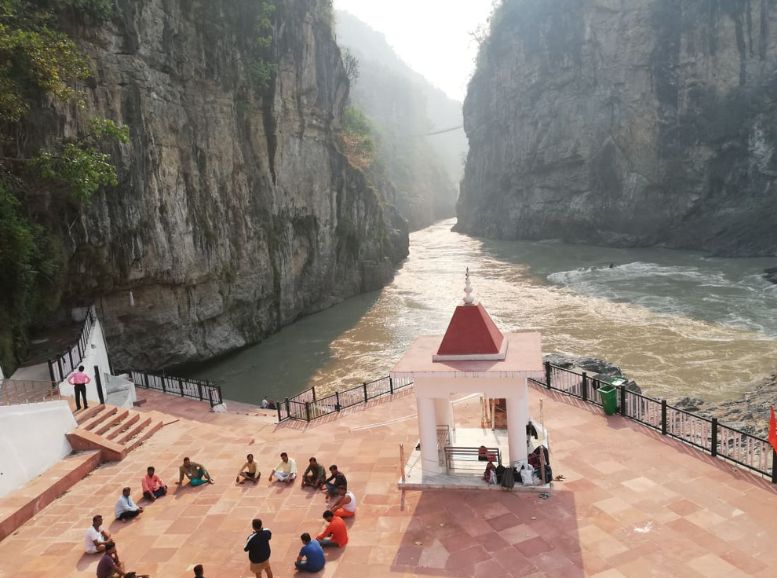
Up on a hill near Rudraprayag, you’ll find the Koteshwar Temple. This old temple, built to honor Lord Shiva, is a peaceful place with amazing views. A story goes around that Lord Shiva rested here after fighting a demon named Kalasura. People come to the temple to worship and enjoy the quiet beauty. You can walk up the hill to the temple and see the rivers and valleys all around. It’s a great spot to take pictures and relax.
Deoria Tal:
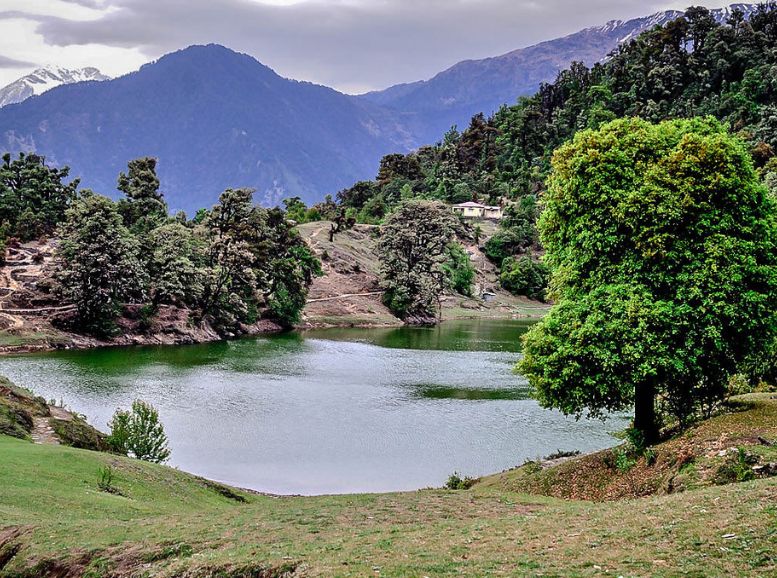
For those who love nature and adventure, Deoria Tal is a peaceful escape in the beautiful Himalayas. This calm lake sits at 2,438 meters (7,999 feet) and reflects the beauty of the surrounding mountains, like Chaukhamba and Kedar Dome. The trek to Deoria Tal is easy and good for people of all ages. It starts at Sari village near Rudraprayag. Along the way, you’ll walk through thick forests, charming villages, and colorful meadows. Once you reach Deoria Tal, you’ll be rewarded with wide views and a feeling of peace that will make you feel happy and relaxed.
Guptkashi:
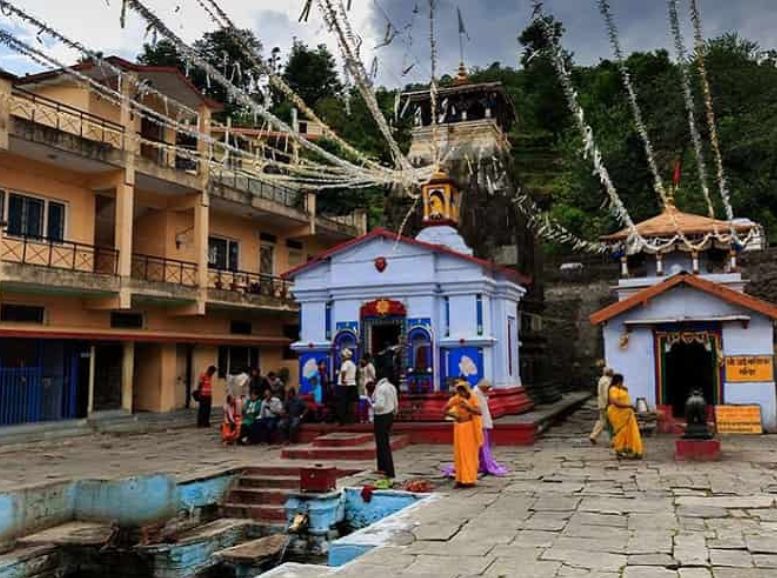
On the way to Kedarnath, you’ll find Guptkashi, a charming town known for its old temples, beautiful views, and peaceful feeling. The town’s name means “hidden Kashi,” because it’s considered a secret home of Lord Shiva. Guptkashi has the Vishwanath Temple and Ardhanarishvara Temple, where people pray and ask for blessings. The town is also a starting point for treks to nearby mountains and offers stunning views of snow-capped peaks. With its peaceful surroundings and rich history, Guptkashi provides visitors with a relaxing getaway and a chance to connect with their spirituality in the beauty of nature.
Agastyamuni:
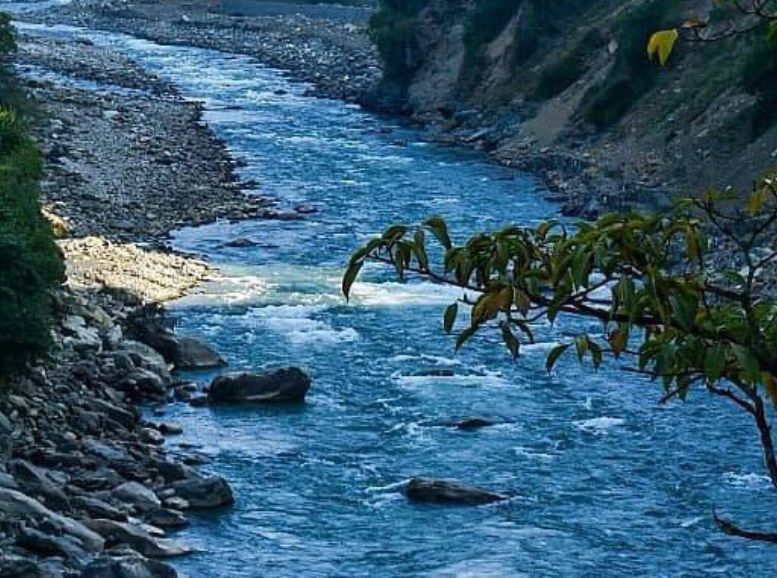
About 73 kilometers from Rudraprayag, you’ll find the small town of Agastyamuni. This peaceful place is named after a wise man named Agastya who is said to have meditated here. Agastyamuni is known for its Agasteshwar Mahadev Temple, a place to worship Lord Shiva. The temple sits in a quiet spot with lots of green plants and the flowing Mandakini River nearby. This peaceful setting makes it a great place for quiet thinking. Visitors can also explore nearby attractions like the Kartik Swami Temple and the pretty villages of Ukhimath and Kalimath.
Ransi Village:
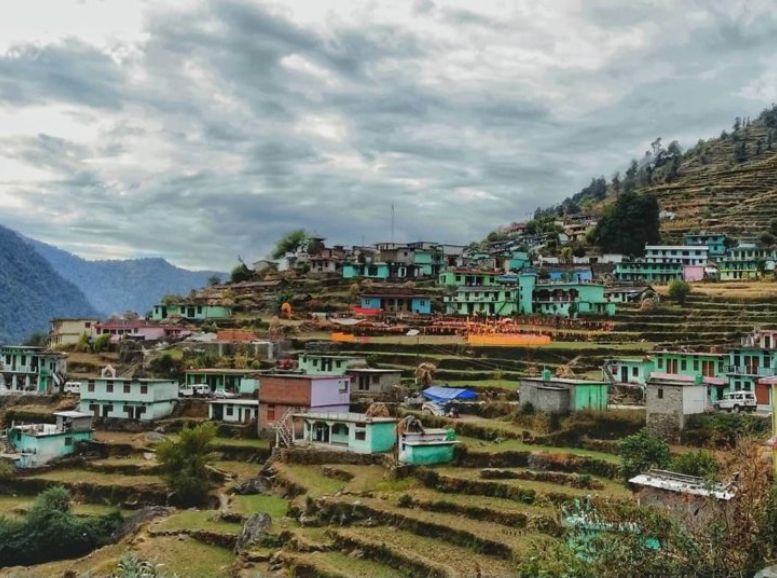
Just 25 kilometers from Rudraprayag, you’ll find Ransi Village, a charming little place nestled in the Himalayas. Known for its natural beauty and traditions, Ransi is surrounded by stepped fields, apple orchards, and pine forests. Here, you can see how people live in the Himalayas. Ransi Village is also the starting point for hikes to Madmaheshwar Temple and offers amazing views of snow-capped mountains. Visitors can chat with the friendly locals, try delicious Garhwali food, and enjoy the friendly welcome from the mountain people by staying in homestays or guesthouses in Ransi Village.
Chandrashila Peak:
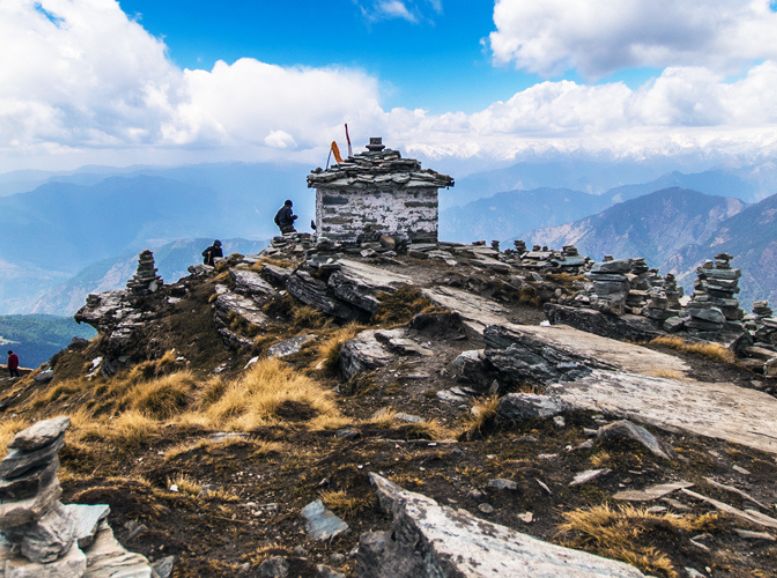
Calling all adventure lovers! If you’re looking for a thrill and amazing views of the Himalayas, Chandrashila Peak is a must-do near Rudraprayag. Sitting at 3,696 meters (12,123 feet), Chandrashila offers a challenging but awesome trek. The hike starts at Chopta and goes through thick forests, high meadows, and rocky paths, ending at the top of Chandrashila. From there, you’ll be rewarded with incredible views of snow-capped mountains like Nanda Devi, Trishul, and Chaukhamba, all set against a bright blue sky. Chandrashila is also known for its breathtaking sunrises and sunsets, making it a great place for trekkers and photographers alike.
Kartik Swami Temple:
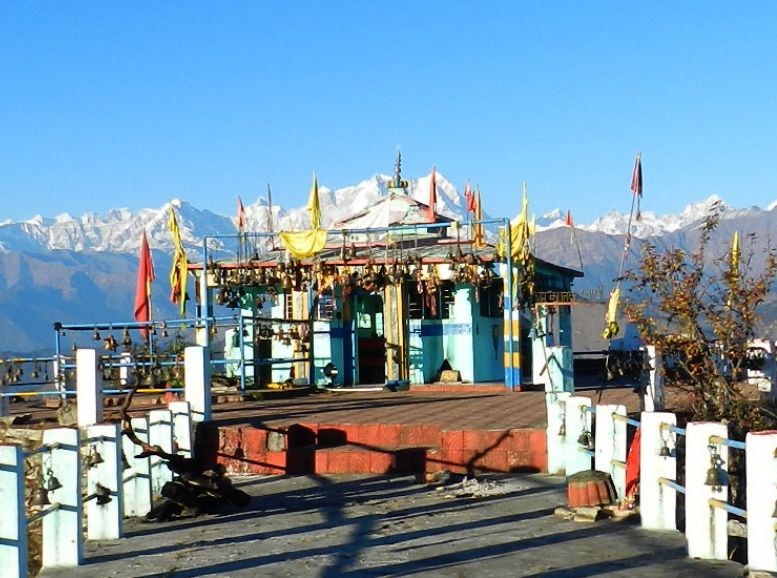
Sitting on top of a hill at 3,104 meters (10,181 feet) is the holy Kartik Swami Temple. This temple is dedicated to Lord Kartikeya, the son of Lord Shiva. It’s about 38 kilometers away from Rudraprayag and offers amazing views of the Himalayan mountains and the beautiful Mandakini Valley down below. The trek to Kartik Swami Temple starts from Kanak Chauri village and is a medium difficulty walk through thick forests and scenic landscapes. The temple’s peaceful feeling and religious atmosphere make it a popular destination for pilgrims, especially during the Kartik Poornima festival which is celebrated with excitement and dedication by devotees.
Beyond sightseeing:
Yoga and Meditation Retreats:
Try yoga and meditation in the peaceful Himalayas near Rudraprayag! Many yoga centers offer classes led by experienced teachers. These old ways of exercising relax your mind, body, and soul, and the beautiful mountains will help you refresh too.
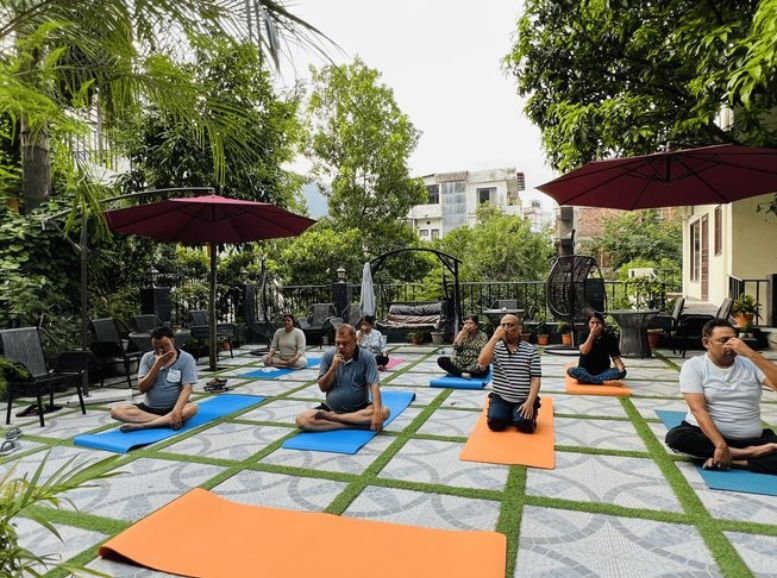
Cultural Immersion:
Learn about the local culture near Rudraprayag by meeting the local people! Visit traditional villages to see how they used to do things, their traditions, and their music and dances. Talk to them and learn about their way of life. Try the kind of food they traditionally eat in Garhwal – delicious local food made with fresh ingredients from nearby.
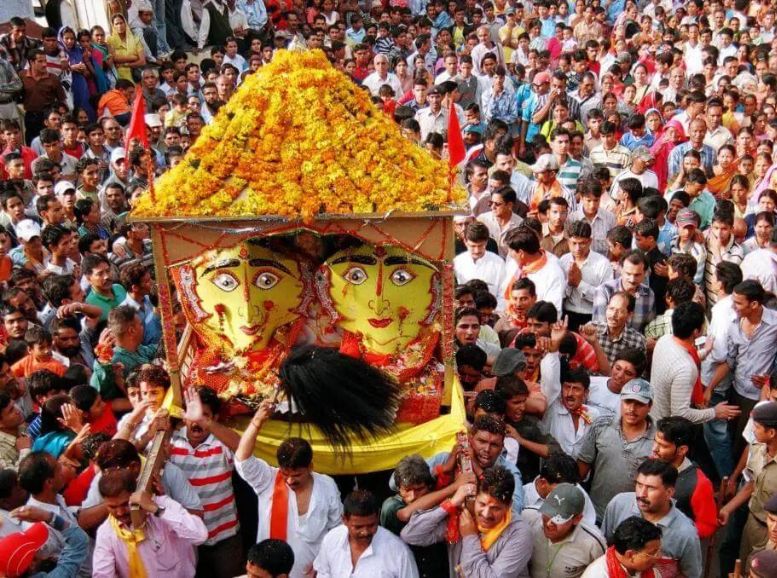
Spiritual Retreats:
Go on a religious trip near Rudraprayag by visiting holy places, watching prayer services, and getting blessings from holy people. Join talks, gatherings, and singing sessions about religion to learn more about Hindu beliefs. Take part in rituals and ceremonies at temples to experience the feeling of holiness that fills the area.
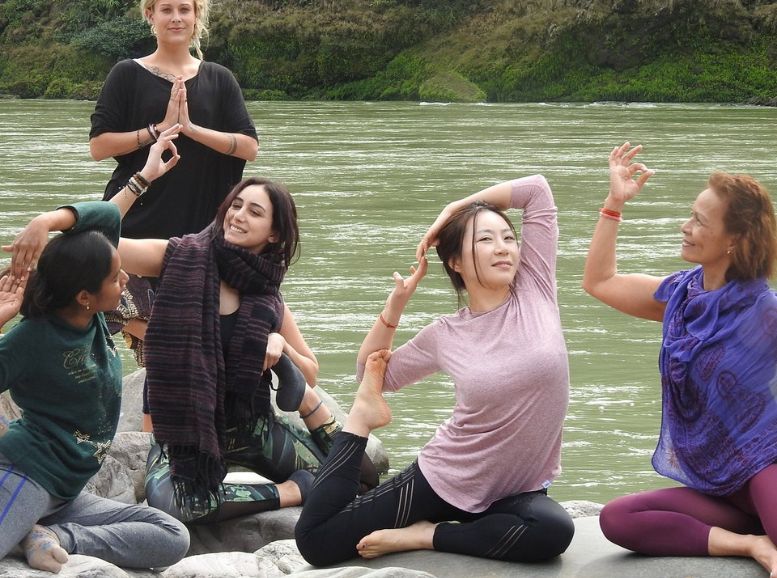
Adventure Sports:
Get your adrenaline pumping near Rudraprayag by trying all sorts of adventure sports and activities! Go trekking on Himalayan trails, from easy walks to challenging hikes. Experience the thrill of white-water rafting in fast-moving rivers, or take a paragliding adventure for amazing views of the beautiful mountains below. Rock climbing, rappelling, camping, and mountain biking are also options, making this place fun for adventurers of all kinds!
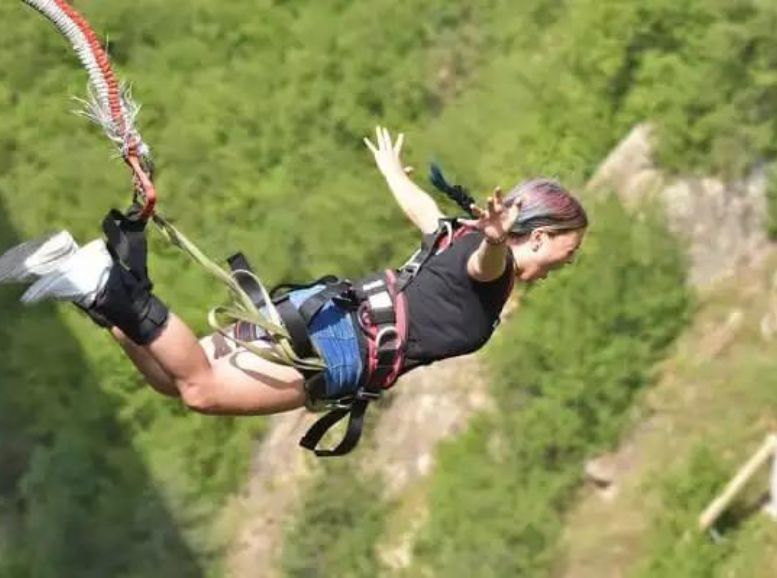
Nature Conservation and Volunteering:
Help protect the environment near Rudraprayag by joining in ways to help the environment and volunteer programs. Local groups are working to protect the variety of plants and animals, save things like water and trees, and encourage ways for tourists to visit that don’t hurt the environment. You can help by planting trees, cleaning up areas, and helping wildlife.
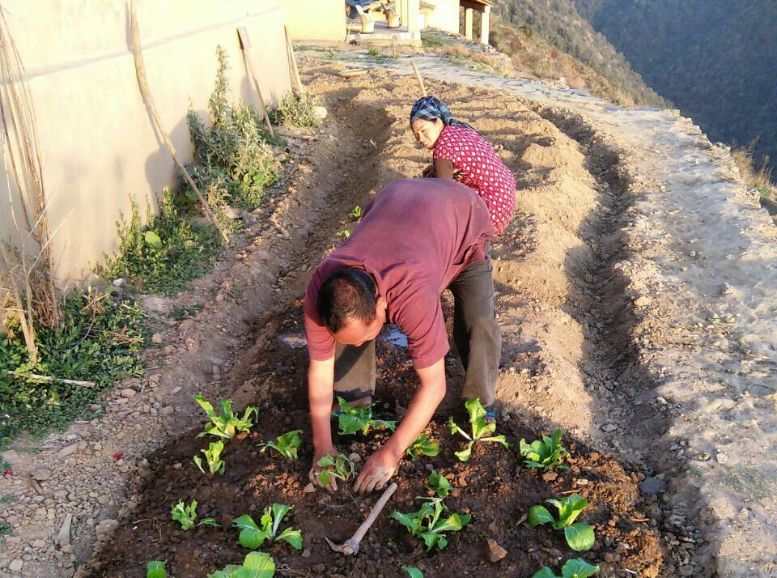
Local experiences:
Homestay Experience:
Immerse yourself in the warmth of Garhwali hospitality by staying with local families in traditional homestays. Experience the simple joys of rural life, engage in meaningful conversations with your hosts, and participate in daily activities such as cooking, farming, and milking cows. This authentic homestay experience provides insight into the local culture, customs, and culinary traditions, allowing you to forge genuine connections with the community.
Village Walks:
Go for relaxing walks through pretty villages in the Himalayas near Rudraprayag! Wander through small streets with old stone houses, stepped fields going up the hillsides, and old temples. Chat with friendly villagers, watch local craft makers working on old crafts like making pots, weaving cloth, and baskets. These village walks will help you see how life is for people in the villages and learn about their traditions.
Festivals and Celebrations:
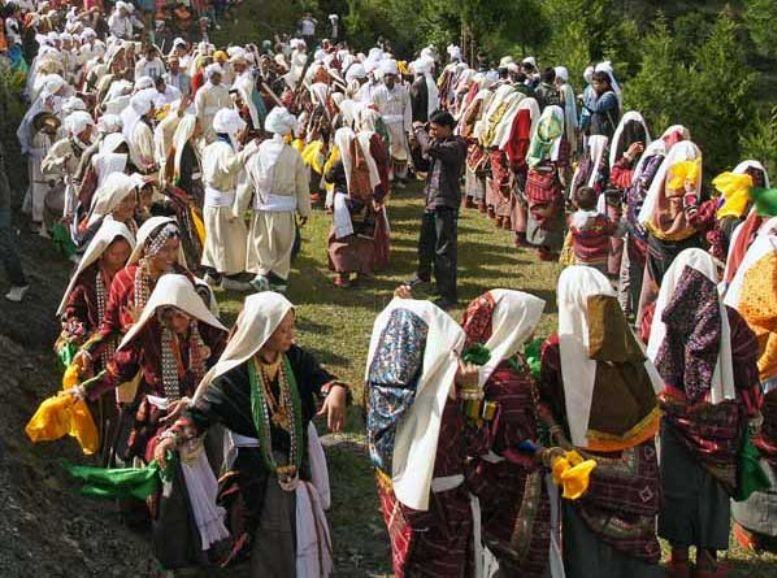
Join in the fun celebrations and festivals near Rudraprayag that show off the strong religious feelings and mix of different traditions in the area! See festivals like Makar Sankranti, Basant Panchami, and Diwali. During these festivals, people gather to pray, do special things as part of their religion, and have parades and shows. Experience the happy atmosphere, traditional music, and dances like Garhwali and Kumaoni folk dances, which all reflect the region’s rich culture and religious beliefs.
Traditional Music and Dance:
Listen to the beautiful sounds and strong rhythms of traditional Garhwali music and dance near Rudraprayag! Go to cultural events, concerts of traditional music, and dance shows put on by local artists and groups. You’ll see amazing performances with local instruments like the dhol (drum), damau (small drum), and ransingha (big horn), beautiful singing, and elegant dancing that tells stories about love, bravery, and religion.
Food delights:
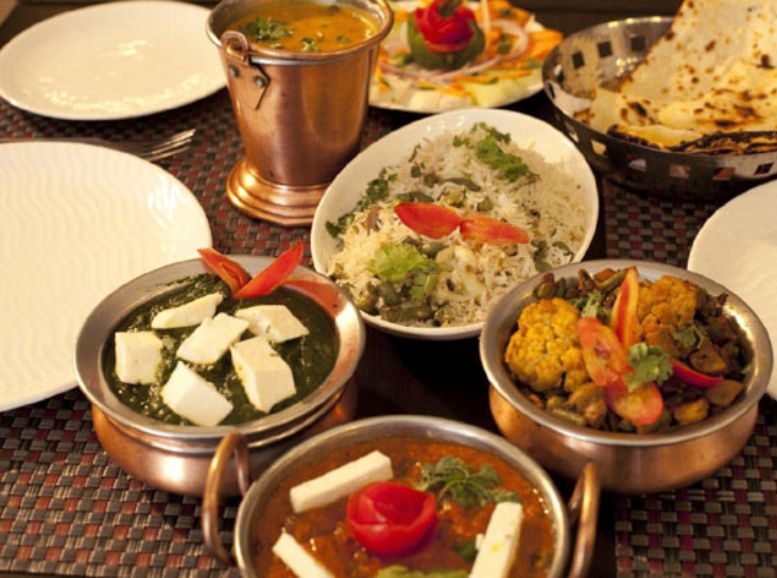
- Mandua ki Roti: A nutritious Garhwali bread made from finger millet flour, often served with ghee or alongside dal and vegetables.
- Kafuli: A flavorsome spinach-based curry enjoyed with rice or roti, representing Garhwali culinary heritage with fresh spinach and fenugreek leaves.
- Chainsoo: A comforting lentil dish made from roasted black gram dal, cooked with spices and ghee, served with rice or roti.
- Aloo Ke Gutke: Crispy potato dish sautéed with mustard seeds, cumin seeds, and spices, ideal as a side dish.
- Bhang Ki Chutney: Tangy condiment made from roasted hemp seeds, mixed with yogurt, spices, and herbs, perfect for adding flavor to meals.
Transportation:
- Rudraprayag is accessible by road from major cities like Dehradun, Rishikesh, and Haridwar.
- Buses, taxis, and private vehicles are available for this route.
- Nearest train station: Rishikesh (140 kilometers away). Taxis and buses connect Rishikesh to Rudraprayag.
- Nearest airport: Jolly Grant Airport, Dehradun (159 kilometers away). Taxis and buses connect Dehradun to Rudraprayag.
- Local buses and taxis are convenient for exploring nearby attractions, temples, and villages.
Travel tips:
- Weather Check: You can move this section before “Getting to Rudraprayag” for better flow.
- Altitude Acclimatization: Consider mentioning a specific recommendation for acclimatization, like spending a day or two in Rudraprayag before heading to higher altitudes.
- Weather Check: Rudraprayag experiences varying weather conditions throughout the year. Check the forecast before your trip and pack accordingly. Bring warm clothes and rain gear, especially during monsoon season.
- Local Cuisine: Enjoy authentic Garhwali food! Try delicacies like Mandua ki Roti, Kafuli, and Aloo Ke Gutke.
- Stay Hydrated: Drink plenty of water throughout your trip due to the mountainous terrain and higher altitude. Carry a reusable water bottle and refill it often.
- Responsible Travel: Dispose of waste properly, respect wildlife and local communities, and minimize your environmental impact.
Conclusion
Rudraprayag stands as a captivating destination, inviting travelers to immerse themselves in its natural allure and cultural richness. From the awe-inspiring vistas of the Himalayas to the ancient temples steeped in mythology, every corner of Rudraprayag holds a story waiting to be discovered. By delving into its diverse attractions, relishing its authentic cuisine, and embracing local traditions, visitors embark on a transformative journey of exploration and enlightenment. As you plan your adventure to Rudraprayag, let Xplro.com be your trusted guide, offering invaluable insights, curated experiences, and expert tips to make your journey truly unforgettable. Remember to travel responsibly, respecting the environment, the local community, and the sanctity of this sacred land.
FAQs
Q: What is Rudraprayag known for?
- Rudraprayag is renowned for its scenic beauty, spiritual significance, and as the confluence point of the Alaknanda and Mandakini rivers.
Q: What are the best months to visit Rudraprayag?
- The best time to visit Rudraprayag is during the months of March to June and September to November when the weather is pleasant for sightseeing and outdoor activities.
Q: How can I reach Rudraprayag?
- Rudraprayag is well-connected by road, and visitors can reach by bus, taxi, or private vehicle from major cities like Dehradun, Rishikesh, and Haridwar.
Q: What are the popular tourist attractions in Rudraprayag?
- Popular attractions in Rudraprayag include the Rudranath Temple, Koteshwar Mahadev Temple, and the scenic viewpoints overlooking the confluence of rivers.
Q: Is Rudraprayag a safe destination for tourists?
- Yes, Rudraprayag is considered a safe destination for tourists. However, it’s advisable to take usual precautions and respect local customs and traditions.
Q: Are there accommodations available in Rudraprayag?
- Yes, Rudraprayag offers a range of accommodations including hotels, guesthouses, and homestays catering to various budgets and preferences.
Q: What are the nearby trekking trails from Rudraprayag?
- Nearby trekking trails from Rudraprayag include the trek to Tungnath and Chandrashila Peak, offering stunning views of the Himalayas.
Q: Can I visit Rudraprayag during the monsoon season?
- While Rudraprayag experiences heavy rainfall during the monsoon season (July to August), some travelers may enjoy the lush greenery, but it’s essential to be cautious of landslides and road conditions.
Q: Are there ATM facilities available in Rudraprayag?
- Yes, there are ATM facilities available in Rudraprayag town, but it’s advisable to carry sufficient cash, especially when traveling to remote areas where banking services might be limited.
Q: What should I wear while visiting temples in Rudraprayag?
- Visitors are advised to dress modestly while visiting temples, covering their shoulders and legs as a mark of respect.
Q: Are there medical facilities available in Rudraprayag?
- Yes, there are medical facilities available in Rudraprayag, including hospitals and clinics. However, it’s advisable to carry necessary medications and a first-aid kit.
Q: Can I indulge in adventure activities in Rudraprayag?
- Yes, Rudraprayag offers adventure activities such as trekking, camping, and white-water rafting, providing thrilling experiences amidst its scenic landscapes.
Q: Is photography allowed at religious sites in Rudraprayag?
- While photography is generally allowed at most religious sites, it’s advisable to respect the sanctity of the place and seek permission before clicking photographs, especially during rituals or ceremonies.
Q: What are the popular local dishes to try in Rudraprayag?
- Popular local dishes to try in Rudraprayag include Mandua ki Roti, Kafuli, Chainsoo, and Aloo Ke Gutke, offering a taste of authentic Garhwali cuisine.
Q: Can I explore nearby villages from Rudraprayag?
- Yes, visitors can explore nearby villages from Rudraprayag to experience the local culture, interact with villagers, and witness traditional customs and practices.




